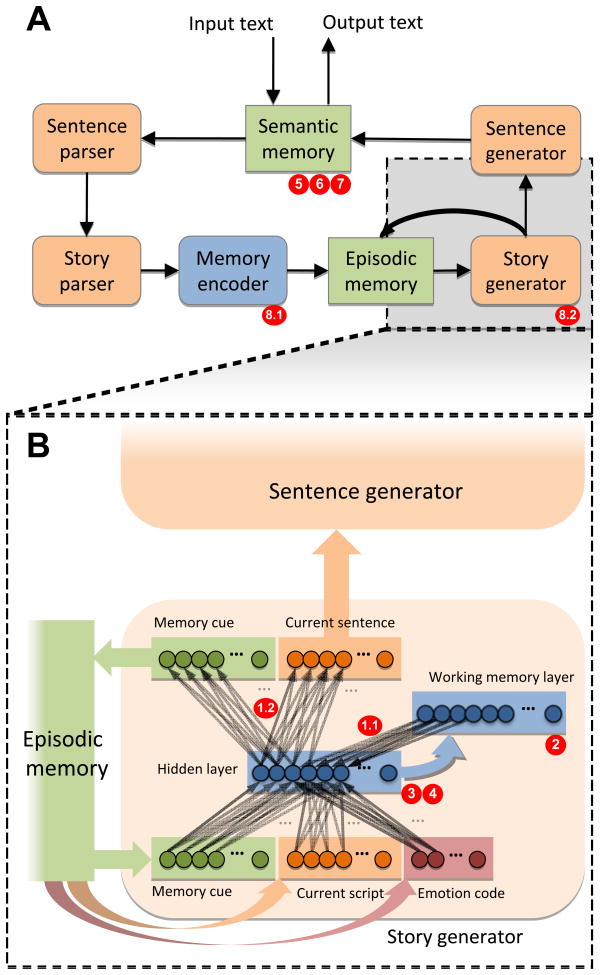Figure 1.
A schematic representation of the architecture of DISCERN. (A) Remembering and reproducing a story in DISCERN is achieved by a chain of modules (40–42). Tan-colored modules are simple recurrent networks (SRNs, ref. 43). (B) The story generator SRN module shown in more detail. Hidden layer and recurrent layer interactions constitute a working memory (WM). The modules in DISCERN communicate using distributed representations of word meanings, i.e. fixed-size patterns of neuron activations, stored in a central lexicon. These representations are learned based on how the words are used in the example stories, using a modified version of backpropagation. The memory trace for each story was a compacted representation of a sequence of scripts and their slot-fillers. Alternative illness mechanisms simulated in DISCERN include: (1.1) WM network disconnection; (1.2) disconnection extended to include hidden→output layer story generator connections; (2) WM noise; (3) WM gain reduction; (4) lowered WM neural bias simulating elevated arousal; (5) semantic network distortion; (6) excessive semantic network activation; (7) heightened semantic priming; (8.1) hyperlearning simulated as exaggerated prediction-error-signal during memory consolidation in the memory encoder (8.2) hyperlearning extended to the story generator module. Details regarding the architecture, function and training of DISCERN are provided in the Supplement.

